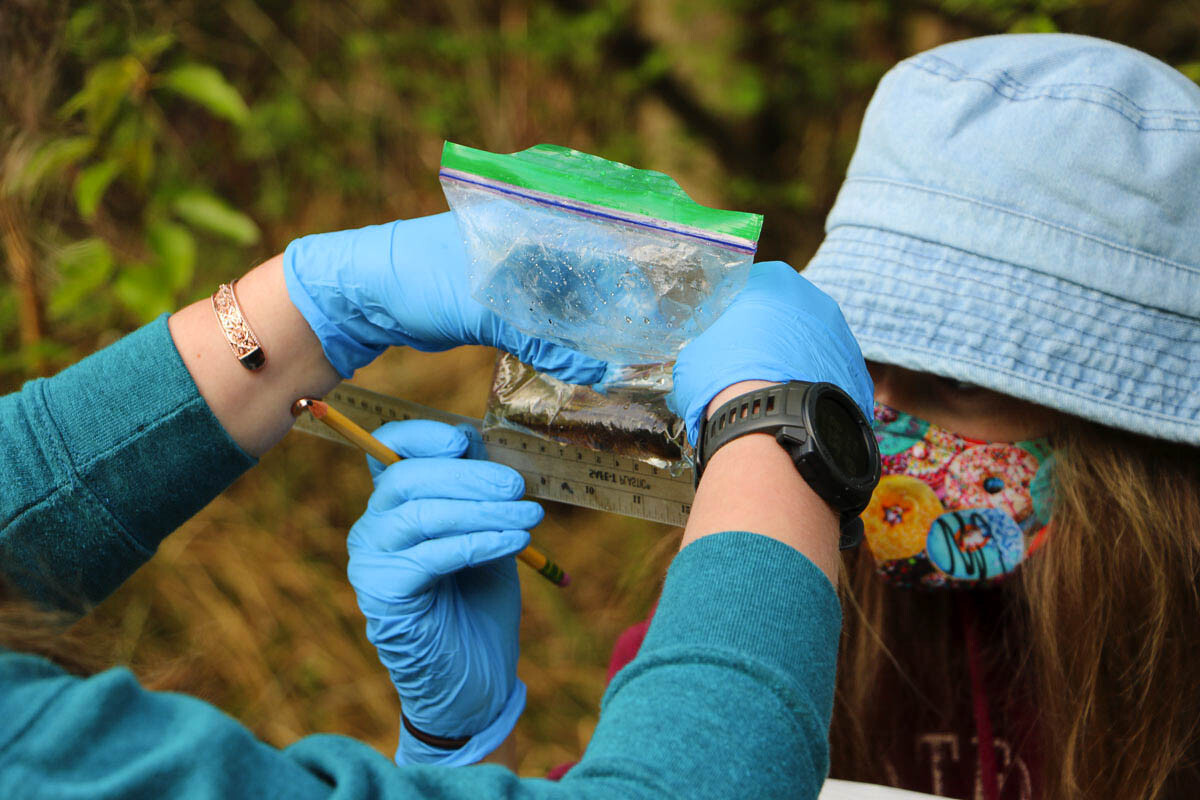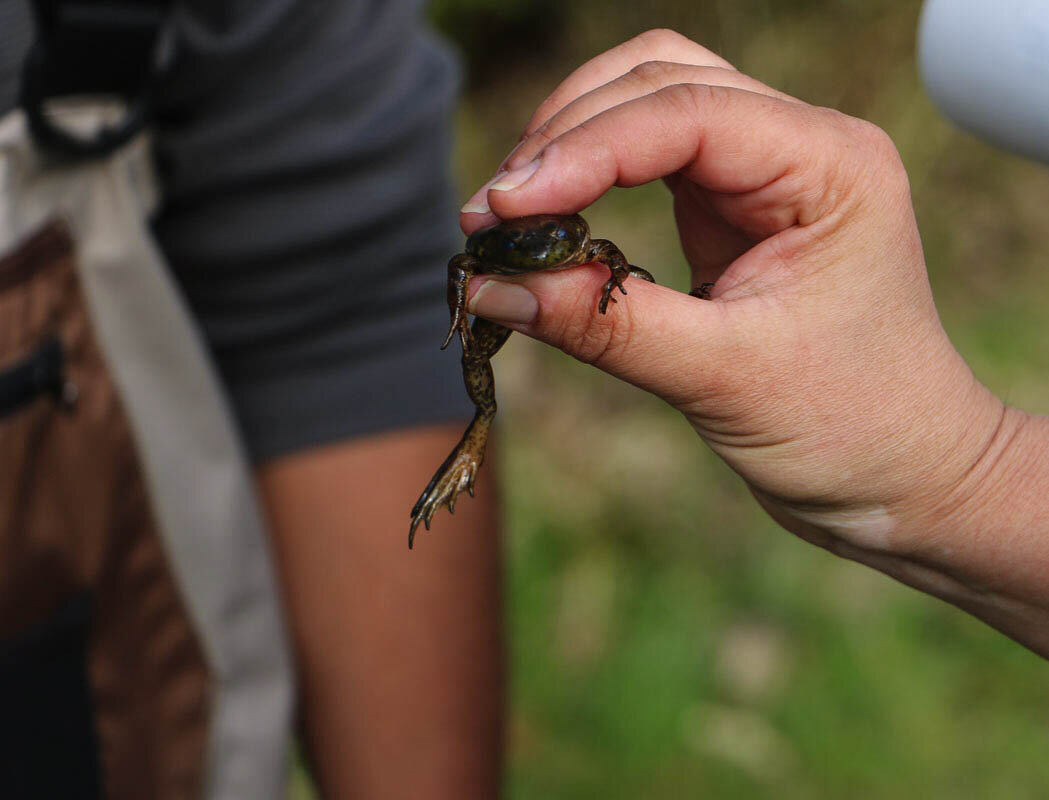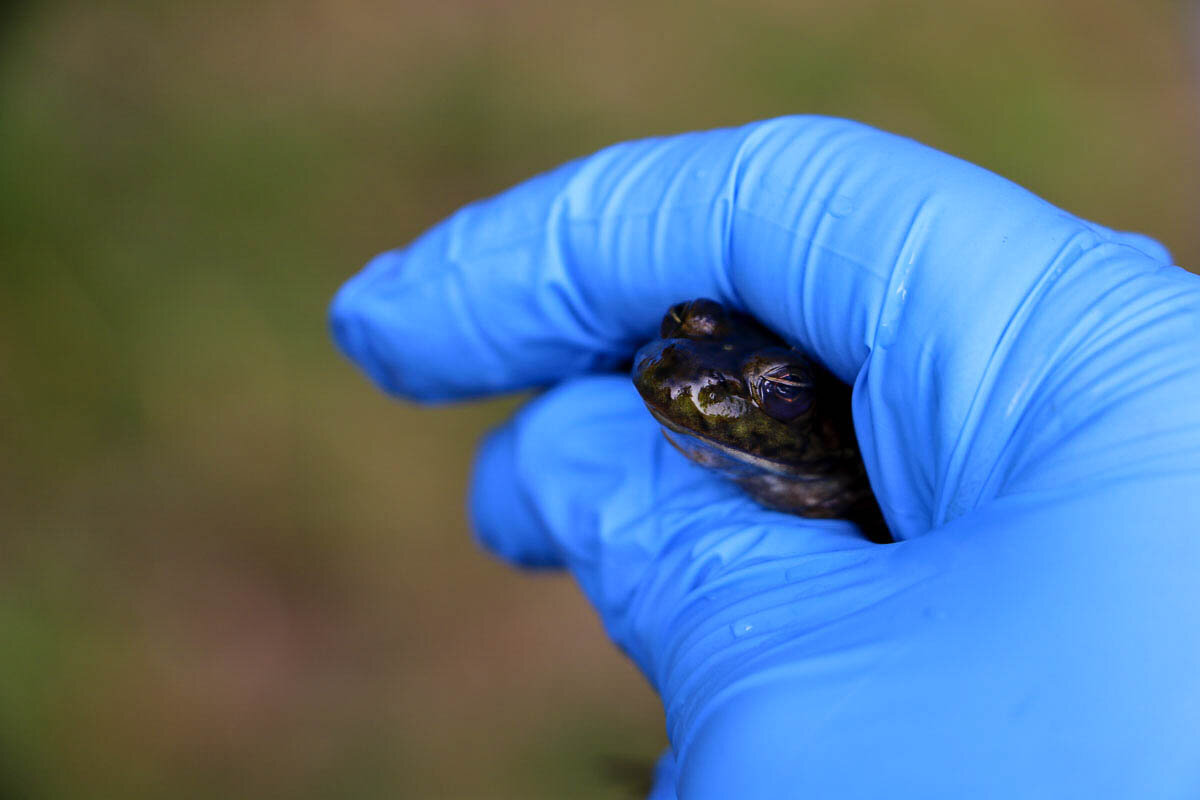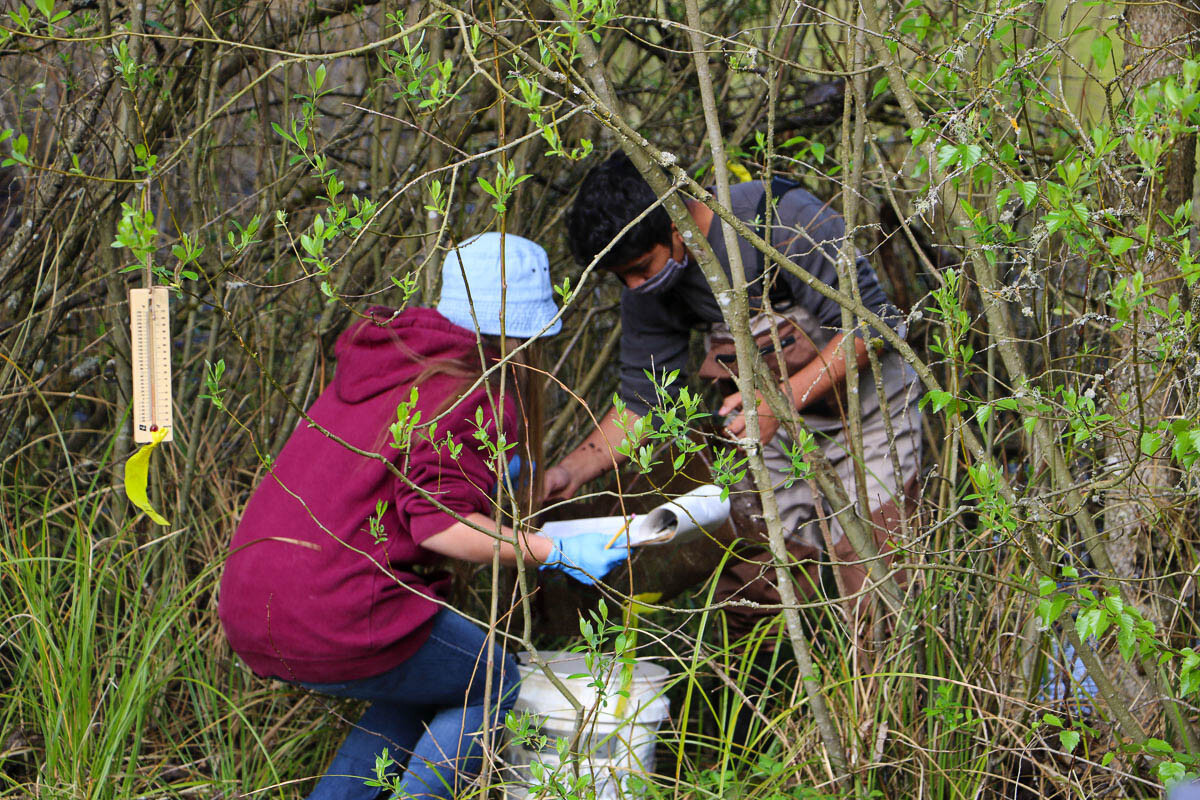Students attend CASEE in the Battle Ground School District, where they study a science-based curriculum immersed in biology, wildlife, food science and other topics
On an overcast Friday morning, students and teachers at the Center for Agriculture, Science and Environmental Education (CASEE) take a short walk to a pond on the 80-acre campus.

While some high school students wade into the shallow water to retrieve nets and bottles set up to catch salamanders, frogs, insects and other pond life, others catalogue what they find and then tag the creatures before they’re released.
In a normal year, it’s the sophomores who do the sample collection; but this year the program’s juniors helped with the process after the pandemic interrupted their research the year before.
The students attend CASEE in the Battle Ground Public Schools district, where they study a science-based curriculum immersed in biology, wildlife, food science and other topics together with English, and then attend their home high school for a half day to round out their studies. Students and staff work alongside professionals from agriculture, environmental and science agencies and businesses as they pursue a science pathway in Career and Technical Education. Students of all ages have access to CASEE for field trips and experiments.

“They’re learning, essentially, what a scientist does,” said CASEE teacher Irene Catlin, who helped to start the amphibian population tracking program 16 years ago. “They’re learning field skills, they’re learning how to work together. They learn so much about the natural world in the process.”
Catlin started the population study in 2006 along with Charlie Crissafulli, a research ecologist at the US Forest Service Pacific Northwest Research Station. The CASEE-site study is based on similar population studies that have been done around Mount St. Helens following the 1980 eruption.
“There’s this huge dataset that students end up having to work through,” CASEE teacher Chris Collmer said. “It’s much more ‘real world’ instead of a typical high school experiment where you might just have the data from that, and it’s pretty easy to sort through.”
Two major trends are being tracked through the program: how species in the pond’s aquatic ecosystem respond to environmental changes over time, and how the presence of the invasive American Bullfrog is impacting the native populations.
“We can see how things are changing,” Catlin said, “and there have been a lot of changes.”

When they first started setting traps, for instance, they would often pull in hundreds of bullfrog tadpoles. Now they’re seeing far fewer, though evidence of the invaders is still clear. At least a couple young specimens were found during this year’s collection.
Data collected by the students also shows that many of the amphibians that call the pond home are returning to breed earlier each year.
“It helps you understand a lot about your environment when you’re able to look at the data,” said Emma Young, a sophomore at CASEE. Knowing that the data they collect will add to a growing catalogue of information that future scientists will analyze and put into use is especially gratifying to the students. “It’s definitely really cool that our data matters,” Young said. “Other people are looking at it, it’s not just us.”
After collecting information at the pond, students return to the classroom where they catalogue their data and then learn to put it into spreadsheets and infographics that illustrate their findings.

Outside of the classroom, CASEE students say the lessons learned at their 80-acre laboratory help to shape their view of the world around them. “You just know more about everything around you,” said sophomore Danika Schnell. “All these little fun facts about how specifically a tree works or just whatever, and that just feels really cool.”
Information provided by Battle Ground School District.




